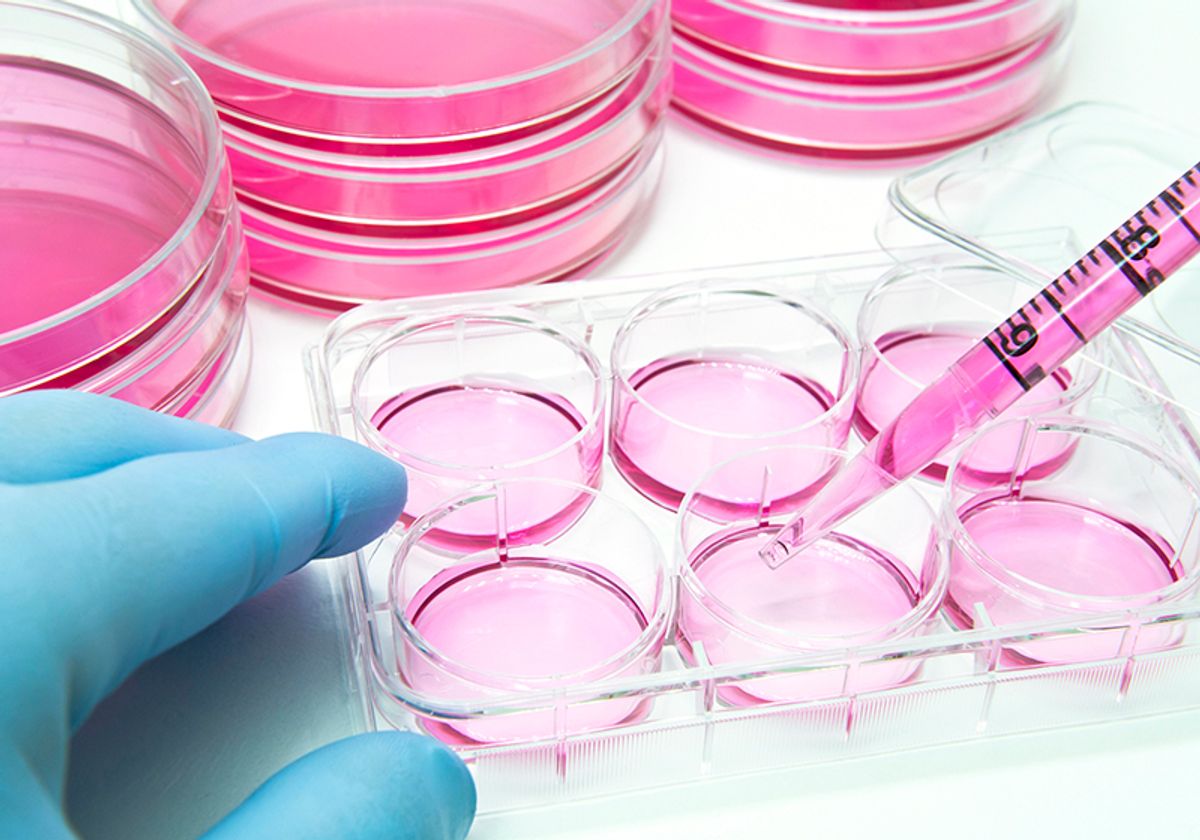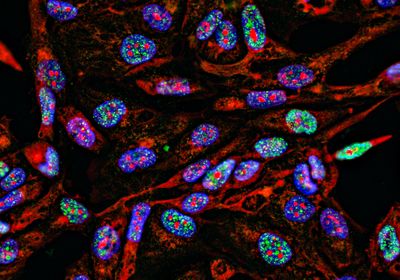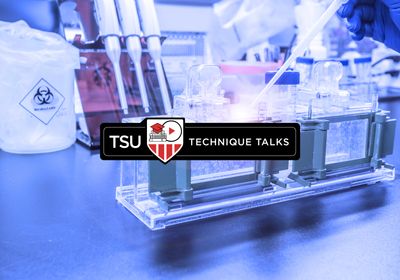Many molecules are unstable, insoluble, or destructive when they exist on their own, in non-complexed forms. Researchers rely on carrier proteins such as albumins to protect small molecules and proteins in research and biomanufacturing. As supplements for cell culture, standards for protein quantification, chaperones for enzyme stabilization, and blocking reagents for immunoassays, albumins support scientists across research applications.1,2
Protein Conformation, Solubility, and Stability
Each molecule has unique chemical properties that affect its structure and behavior. For proteins, these properties include amino acid sizes, charges, and polarities, which affect how proteins fold into energetically favorable and stable shapes. In cellular environments, proteins need to fold so that hydrophobic amino acid residues shield each other from water molecules. In contrast, hydrophilic residues are typically exposed on the protein’s surface and interact with the cytoplasm’s water. While many proteins fold into energetically favorable structures on their own, some are prone to misfolding and need assistance from other proteins to acquire or maintain a stable shape, either inside the cell or in vitro.2,3
What Are Albumins?
Albumins are a family of proteins present in a variety of animal fluids and tissues and, to a lesser extent, plant materials. There are several types of albumins often used in research, including human albumin and bovine serum albumin (BSA), which are commonly found in blood, and ovalbumin which is found in egg whites.4 Regardless of the albumin source, these proteins have high water solubility and carry many electrically negative charges, which enables researchers to bind, sequester, and stabilize a range of important molecules in solution, including proteins.4 Scientists also use albumins in cryopreservation, as drug nanocarriers and oxygen transporters, and as supplements in cell culture.1
Albumins in Cell Culture
In vivo and in vitro, albumin acts as a multifaceted antioxidant that protects molecules such as fatty acids, metals, and amino acids from oxidation. Additionally, in cell culture systems, scientists use albumins as a source of essential amino acids and nitrogen for cell growth, as a substrate for cell attachment, and as a pH stabilizer that protects cells from stress and damage.4,5
In cell culture media, albumin functions by binding and delivering other essential molecules to cells. Although albumins are important for many cell culture systems, including hybridoma and Chinese Hamster Ovary (CHO) cell cultures, not all albumins have the same efficacy. Factors such as the nutritional status of the source animal and the purification process that researchers use to collect albumins affect activity by changing the albumin ligand profile. This may explain why albumin derived from human (HSA) or bovine (FBS) sera perform differently than recombinant albumin, and why the effectiveness of one type of albumin varies between different cell culture systems.5

Essential Proteins for Comprehensive Application Needs
Researchers need dependable sources of albumin to ensure reliable small molecule and protein protection in their in vitro and cell culture systems. Because of varied efficacies, scientists using these carrier proteins to support cellular systems must choose albumins that have been specifically tested for cell culture applications. MilliporeSigma provides a range of albumins tested and verified for comprehensive application needs, including cell culture, protein quantitation, enzyme stabilization, ELISA, and antibody-related processes.2 Along with albumins from diverse sources, MilliporeSigma offers these essential proteins in different formats and formulations, suitable for researchers embarking on foundational science discoveries, biomanufacturing breakthroughs, and translational studies.
References
- Raoufinia R, et al. Overview of albumin and its purification methods. Adv Pharm Bull. 2016;6(4):495-507.
- Albumins and transport proteins. Millipore Sigma. Accessed July 19, 2023.
- Reynaud E. Protein misfolding and degenerative diseases. Nat Edu. 2010;3(9):28.
- Hutapea TPH, et al. Albumin: Source, preparation, determination, applications, and prospects. J Sci: Adv Mater Devices. 2023;8(2):100549.
- Albumin in cell culture. Millipore Sigma. Accessed July 19, 2023.
The Life Science business of Merck KGaA, Darmstadt, Germany operates as MilliporeSigma in the U.S. and Canada.







